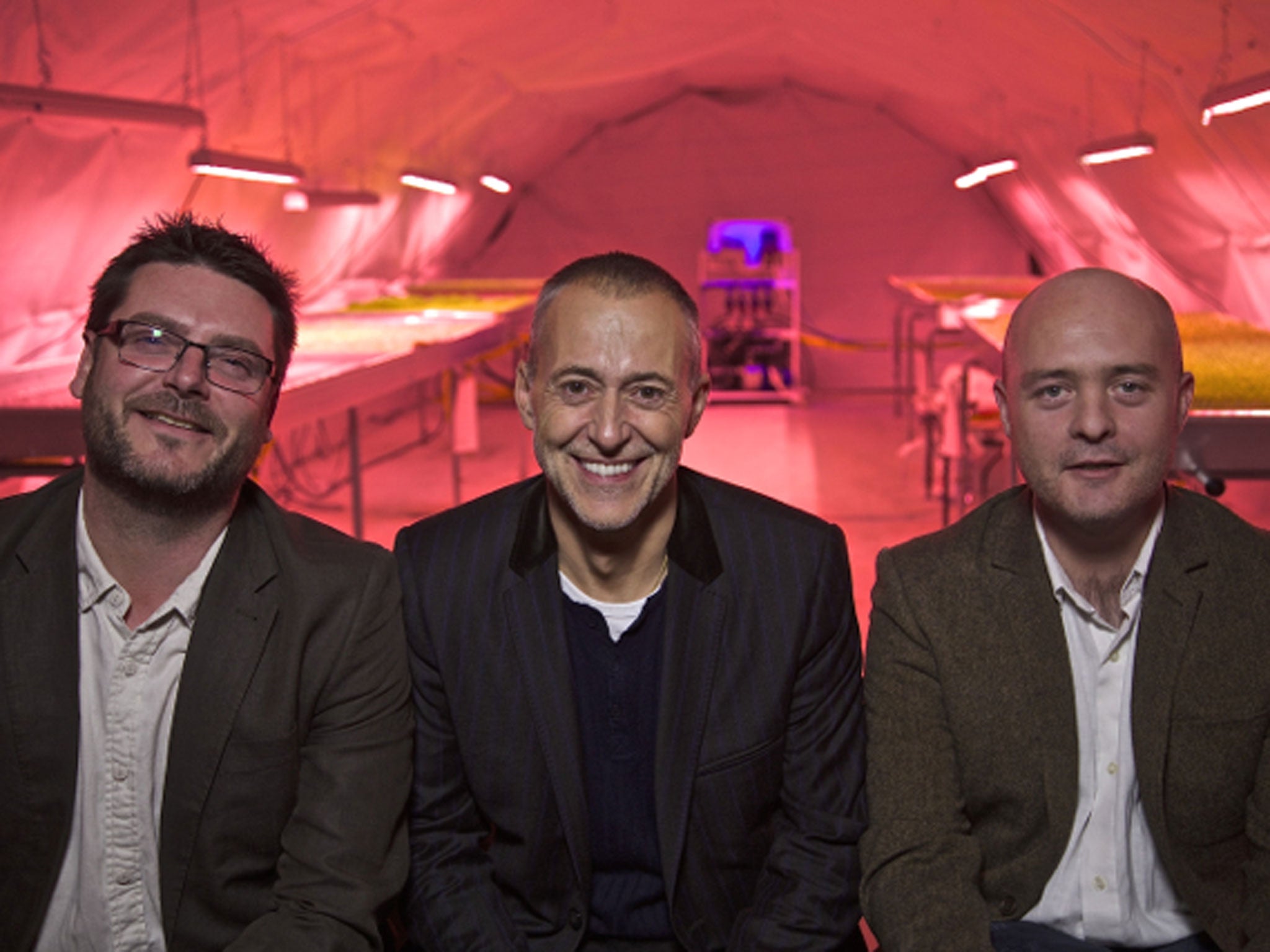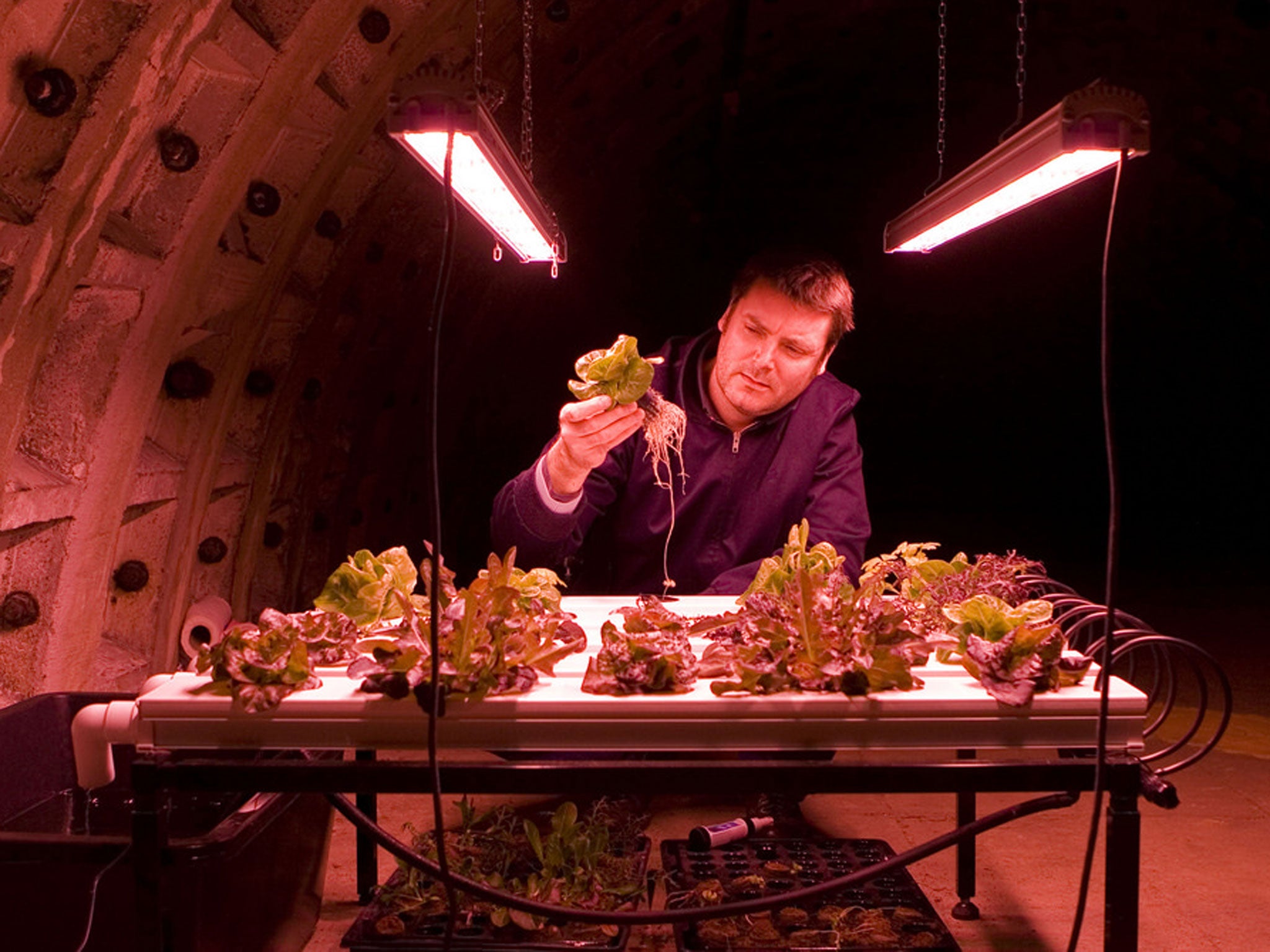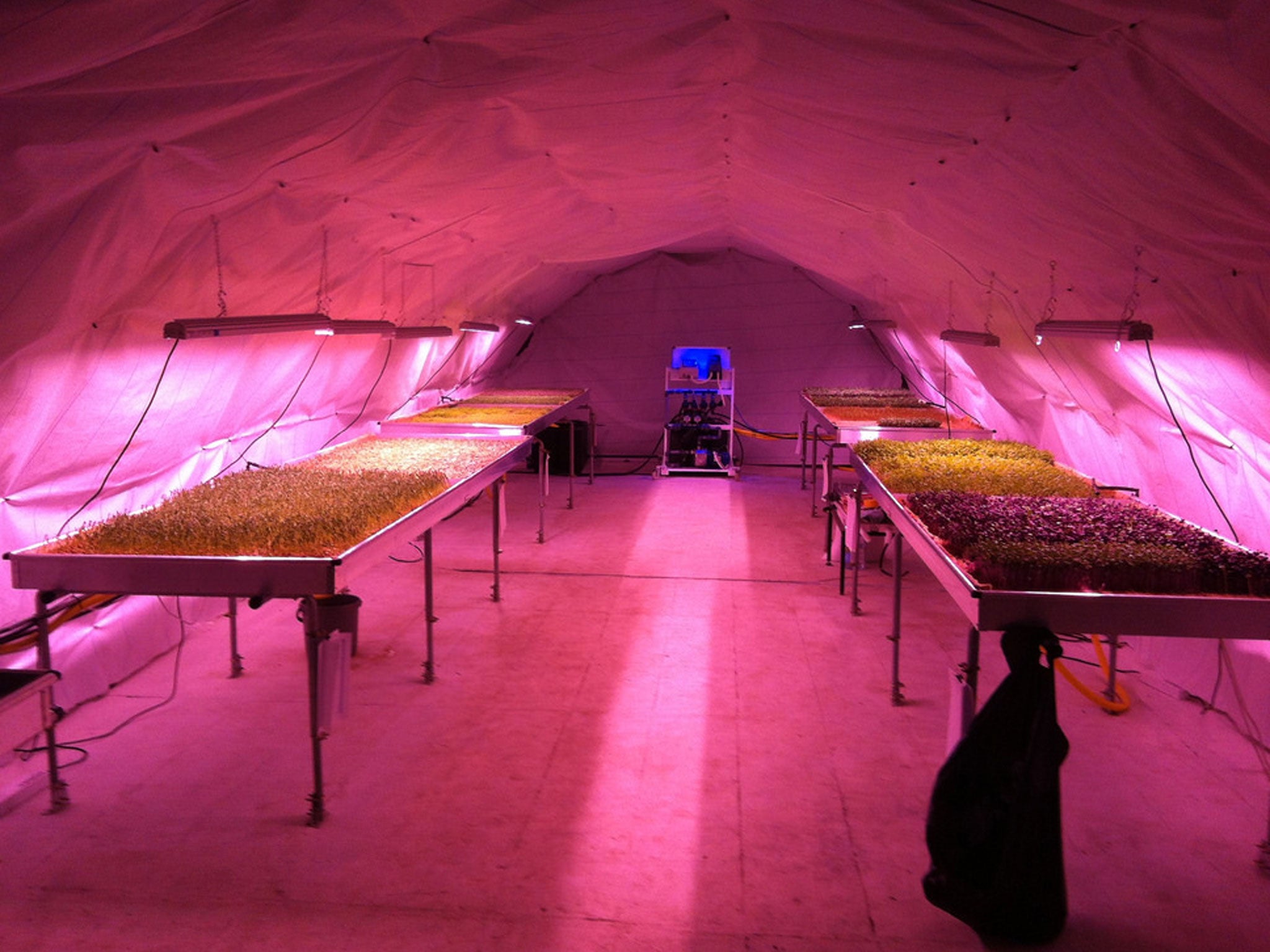Growing Underground: Michel Roux Jr reveals plans for subterranean farm in the depths of empty south London tunnels
Michelin-starred chef Michel Roux Jr has joined forces with two foodie entrepreneurs to grow herbs and vegetables 100ft below the ground

Deep beneath the streets of the capital it was designed to protect Londoners from the Luftwaffe’s onslaught at the height of the Blitz. Today though the Clapham North deep-level bomb shelter in is home to a far greener and tastier variety of subterranean dweller.
Thanks to advancement in LED lighting technology, the plant-friendly temperature found 100ft below ground and some support from celebrity chef Michel Roux Jr, the damp Second World War air raid shelter is being transformed into the capital’s first underground farm.
The brainchild of foodie entrepreneurs Richard Ballard and Steven Dring, and their firm Zero Carbon Foods, the project, which covers 2.5 acres has already harvested some of its first crop of peashoots, micro radish and mustard redleaf.
Mr Roux, the two-star Michelin chef behind Le Gavroche and one of the stars of "Masterchef: The Professionals", was an early fan and is now a director of the company.
He said, “When I first met these guys I thought they were absolutely crazy, but when I visited the tunnels and sampled the delicious produce they are already growing down there I was blown away. The market for this produce is huge.”

The site has been leased by Zero Carbon Foods from its owner Transport for London for 25 years but trials have been running for 18 months already. Now the firm is expand production and is seeking £1m in crowd-sourced funding to bring its subterranean herbs, shoots, miniature vegetables, edible flowers and other delicacies to Britain’s high-end restaurants and food stores.
The dark farm, which is located just off the A2 near Clapham North Underground station in south London, is housed in a shelter that at its peak in July 1944 kept more than 8,000 Londoners safe from German V1 and V2 rocket attacks.
However instead of sleep-deprived Londoners, cups of Bovril and wooden bunkbeds, it will soon house crops of further exotic plants and produce, including Garlic Chives, Red Vein Sorrel, Thai Basil and Red Amaranth, for some of London’s top restaurants as well as the nearby New Covent Garden market.
“My business partner Steven and I have always been interested in sustainable cities, reducing energy usage and how to use redundant space in our cities, so this was the perfect opportunity for us,” Richard Ballard told the Independent.
He added, “The advancements in LED lighting technology mean we can do this more affordably and efficiently and because we’re underground at a constant temperature we don’t need to add a lot of heat, which they often have to do in conventional farming.”
Full scale farming is set to commence in March after an initial £50,000 investment and the team behind what they are calling the “Growing Underground” plan for the first produce to hit the shelves by late summer.
According to the farm’s creators the project will be carbon neutral and use low-energy LED bulbs and an integrated hydroponics system. Its location below the ground means the tunnels keep a steady temperature of around 16 degrees all year round and energy consumption is kept to a minimum, while special filters will be installed to keep the tunnels free of pests, eliminating the need for pesticides

There are eight deep-level shelters dating from the Second World War in the capital at Chancery Lane on the Central Line and Belsize Park, Camden Town, Goodge Street, Stockwell, Clapham North, Clapham Common and Clapham South on the Northern Line. Work started in November 1940 at the height of the Blitz and when completed in 1942 each shelter was 366m long and equipped with bunks, medical posts and kitchens to sustain about 8,000 people each night.
They were originally used by the government and General Eisenhower directed D-Day landings from the Goodge Street shelter in June 1944, but five were opened to the public as bombing intensified in 1944 with the V1 and V2 rocket assaults.
Today they are owned by TfL which rents them out to storage firms and to companies providing data centres for City firms, though Zero Carbon Food had to remove hundreds of bunk-beds which had not been used since the Second World War before planting its herbs and vegetables.
Independent food critic Samuel Muston gives his verdict on the underground food
The first thing to note about the peashoots, micro radish, and mustard redleaf grown four-stories underground is that they look exactly like their above-ground brethren. I suppose I was expecting them to look a little green about the gills, a little sickly. Yet here they are in front of me, plum and meaty. That was the first surprise. The second is the flavour. They taste vivid and vital. Everything, mercifully, is in the right place. No Frankenflavours here. The redleaf has that mustard sting; the peashoot tendrils, that grassy deliciousness. Buy the same in a supermarket, even a posh one, and you are likely to encounter a taste pitched somewhere between dust and brown paper envelopes.
Here, surprisingly, they taste of the fields.
Join our commenting forum
Join thought-provoking conversations, follow other Independent readers and see their replies
Comments